LOG Page Info
LOG PAGEs are used to store performance and error data within a SCSI/FC/SAS device as it is running. They are read using the LOG SENSE command, and written using the LOG SELECT command. This information is organized in pairs of LOG PAGE/PARAMETER. Some common LOG PAGES are:
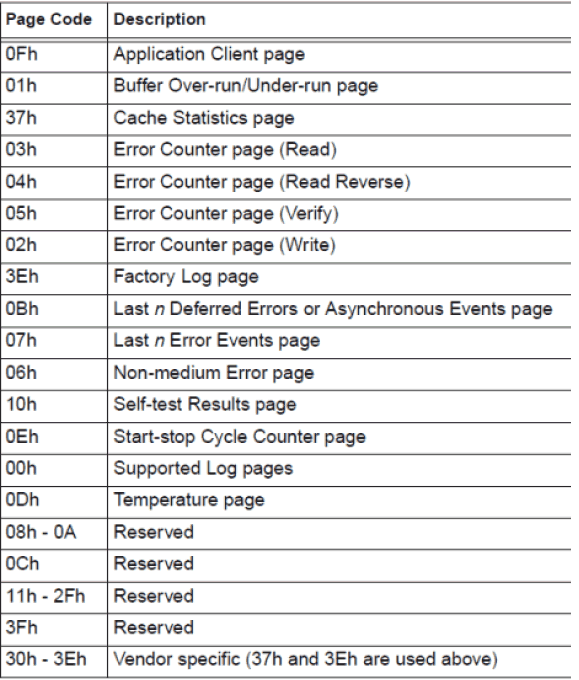
Example of LOG PARAMETER
This is an example of typical LOG PARAMETER, for the write and read error pages:
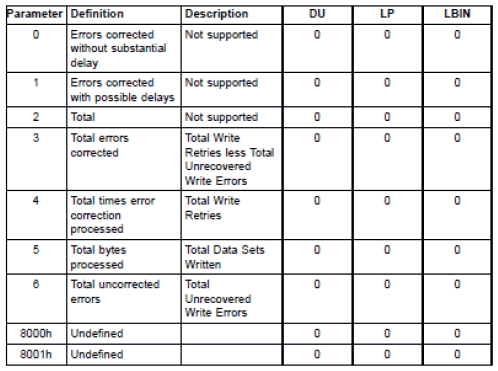
I recommend getting the manufacturers SCSI documentation for each drive you are interested in so you can see what pages have been implemented and if there are any vendor unique pages.
Viewing LOG PAGES in STB Original mode
Select a drive in the device display, then right-click on it to bring up the Quick Command menu:
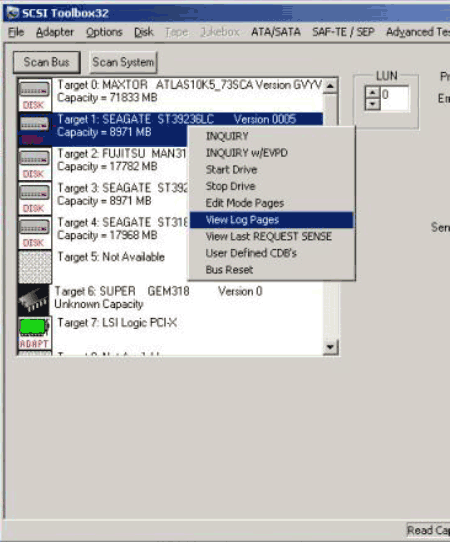
Select View Log Pages
This is what the “raw” page/parameter data will look like – fine if you are comparing with the specs but not so good to read – so click on the “Browse” button, navigate to your default STB folder, and select an appropriate “.def” file.
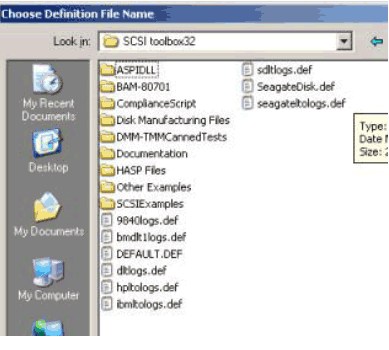
Default.def is a generic def file for disks. Now things will look like this:
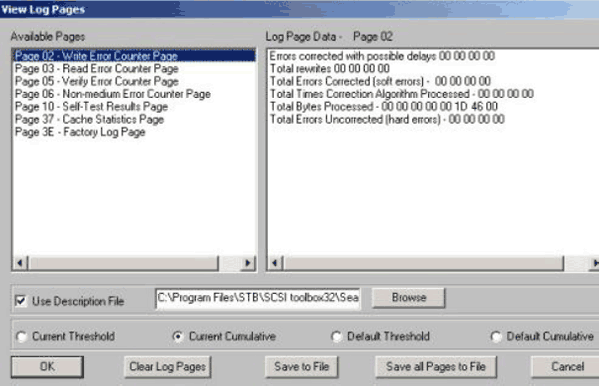
These .def files are text files which you can edit, create custom ones with your company specific page/parameter data.
Clicking Clear Log Pages will zero out any valid pages.
LOG PAGES and DMM
You can save all LOG PAGE data into the drive log files by specifying the Save Log Pages test type in a test sequence. Use Clear Log Pages to clear them.
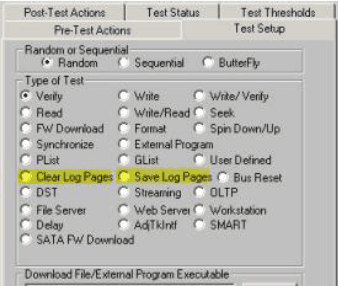
You can also screen (fail) drives using the DMM Thresholds settings. Select the Test Thresholds tab,
Then specify either the standard/generic # of Re-Reads or Re-Writes (looking at LOG PAGEs 2 & 3), or specify up to six specific PAGE/PARAMETER pairs with the value that you want to stay under.
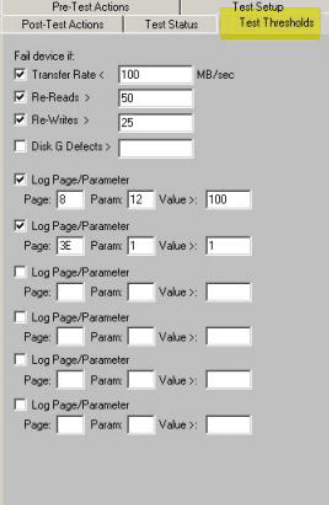
The Test Thresholds will be checked after each test sequence step completes.